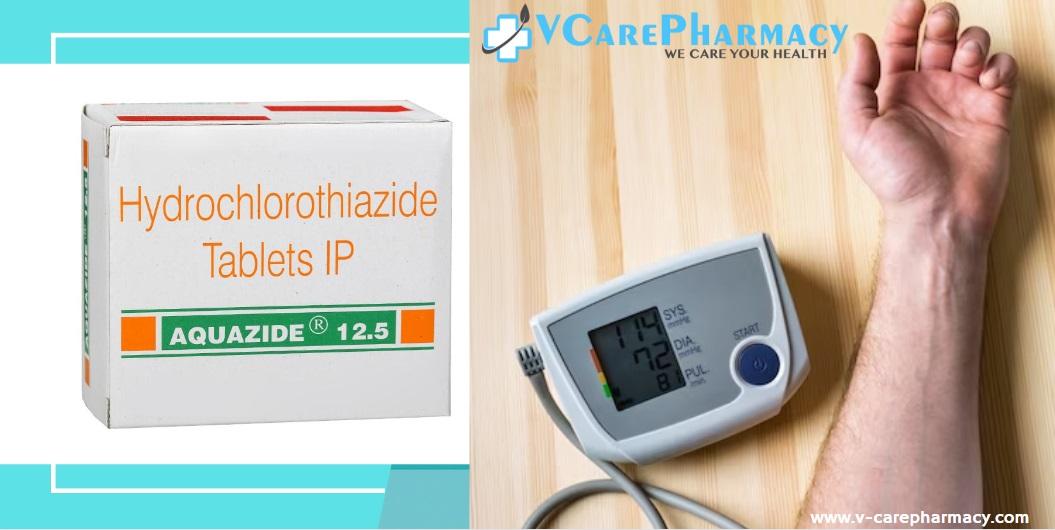Introduction:
Aquazide 12.5 mg is a medication commonly prescribed to treat hypertension (high blood pressure) and edema (fluid retention). It belongs to a class of drugs known as diuretics, which work by increasing the amount of urine produced by the kidneys, thus helping to reduce excess fluid in the body. In this blog post, we'll delve deeper into the uses, benefits, and potential side effects of Aquazide 12.5 mg.
Uses:
1. Hypertension Management: One of the primary uses of Aquazide 12.5 mg is in the management of hypertension. High blood pressure is a common condition that can lead to serious health complications if left untreated. Aquazide helps to lower blood pressure by removing excess sodium and water from the body, thereby reducing the volume of blood in the circulatory system.
2. Edema Treatment: Aquazide is also effective in treating edema, which is the abnormal accumulation of fluid in the body's tissues. This condition often manifests as swelling in the feet, ankles, and legs and can be caused by various factors such as heart failure, liver disease, or kidney problems. By promoting diuresis (increased urine production), Aquazide helps to alleviate edema and relieve associated symptoms.
Benefits:
1. Blood Pressure Control: Aquazide helps to lower blood pressure levels, reducing the risk of complications such as heart attacks, strokes, and kidney problems. By maintaining blood pressure within a normal range, Aquazide contributes to overall cardiovascular health and well-being.
2. Edema Relief: For individuals experiencing edema, Aquazide offers significant relief by reducing swelling and discomfort. By eliminating excess fluid from the body, Aquazide helps to restore normal fluid balance and improve mobility and comfort.
3. Combination Therapy: Aquazide may be prescribed alone or in combination with other antihypertensive medications to achieve optimal blood pressure control. Combining Aquazide with drugs from different classes can enhance its effectiveness and provide comprehensive management of hypertension.
4. Oral Administration: Aquazide is available in oral tablet form, making it convenient and easy to administer. Patients can take it with or without food, as directed by their healthcare provider, making it suitable for a variety of lifestyles.
Side Effects:
While Aquazide 12.5 mg is generally well-tolerated, like all medications, it may cause side effects in some individuals. Common side effects include:
1. Dehydration: Excessive diuresis can lead to dehydration, especially in hot weather or with vigorous exercise. It is essential to stay adequately hydrated and consult a healthcare professional if symptoms such as dry mouth, thirst, or decreased urination occur.
2. Electrolyte Imbalance: Aquazide can cause imbalances in electrolytes such as sodium, potassium, and magnesium. This can result in symptoms like muscle weakness, cramps, or irregular heartbeat. Regular monitoring of electrolyte levels is necessary, particularly in patients at risk of imbalance.
3. Dizziness or Lightheadedness: Some individuals may experience dizziness or lightheadedness, especially when standing up quickly. It is essential to rise slowly from a sitting or lying position to minimize the risk of falls or accidents.
4. Allergic Reactions: In rare cases, Aquazide may trigger allergic reactions such as rash, itching, or swelling of the face, tongue, or throat. Seek immediate medical attention if any allergic symptoms occur.
Conclusion:
Aquazide 12.5 mg is a valuable medication used in the management of hypertension and edema. By promoting diuresis and reducing fluid retention, Aquazide helps to lower blood pressure and alleviate swelling, improving overall health and well-being. While it offers numerous benefits, it is essential to be aware of potential side effects and to use the medication as directed by a healthcare professional. If you have any concerns or experience any adverse reactions while taking Aquazide, consult your doctor promptly for guidance and support.

